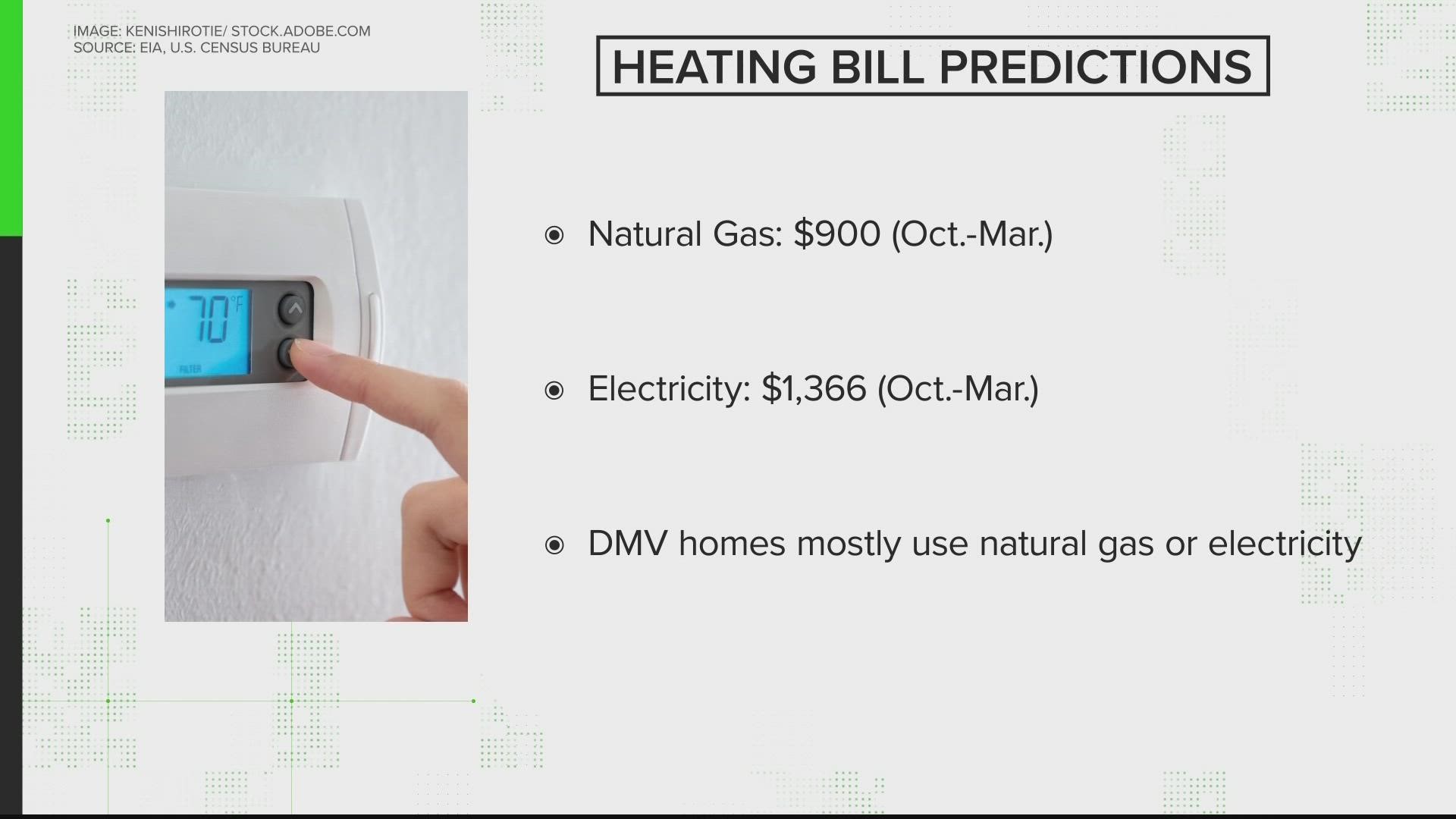WASHINGTON — As the U.S. heads into the winter months, the federal government is predicting higher heating bills. So what can you expect?
THE QUESTION:
Are heating bills expected to rise this winter?
THE SOURCES:
- U.S. Energy Information Administration- "Short-Term Energy Outlook" "Average Consumer Prices and Expenditures for Heating Fuels During the Winter"
- U.S. Census Bureau- American Community Survey
- Mark Wolfe- executive director, National Energy Assistance Directors’ Association
- Ian Lange- director of the Mineral and Energy Economics program at Colorado School of Mines
- Ed Hirs- energy fellow at the University of Houston
THE ANSWER:
WHAT WE FOUND:
Not good news for your heating bill this year.
The U.S. Energy Information Administration (EIA) is forecasting a spike in this winter’s heating costs, across the board.
"The average family is spending about $200 to $300 more to heat their home this winter, on top of $200 more last year," Mark Wolfe, the Executive Director at the National Energy Assistance Directors Association explained. "Overall, families are spending about $400 to $500 more to heat their home, than they did a few years ago."
EIA’s forecast shows the average household will pay roughly $900 between October and March when using a gas heater, or roughly $1300 for electricity. That's higher than at least the last seven winters, EIA data shows.
Compared to last winter, the average household spent $723 on natural gas, and $1,233 on electricity; an increase of 25% and 11% respectively.
In the DMV region, those are the two most used heating types according to census data.
More than 50% of D.C. homes use gas, followed by 43% using electricity. While 43% of Maryland homes use gas with nearly an equal number using electricity.
In Virginia, it's flipped with more using electricity than gas, 55% and 33% respectively.
Wolfe said it is difficult to know how accurate these predictions will be
"We're thinking 'how cold will it be?'—no one really knows, but we have to make a projection about how cold will it be as well as supply," Wolfe said. "Now the price of energy is pretty accurate, because electric companies and gas companies have to buy most of their fuel now, so they know what they're spending for it. And they then pass those additional costs on to their customers, what we don't know, of course, is how cold it would be and the cold factors into how much energy you use."
So Why are prices going up?
"The main one is the war in the Ukraine," Wolfe said. "Because Russia cut off supplies of natural gas to Western Europe. We're now exporting 20% of our natural gas to Europe. And that's putting pressure on markets here."
Lange adds that wasn't always a possibility. Prior to 2019, he explains, the U.S. couldn't export as much as it can now.
"In 2019, you couldn't export as much natural gas because physically it was impossible," he said. "You need to liquefy it, and you know, so you need to freeze it, which makes it a liquid, put it on ship ...so we didn't have as many of those in 2019...something bad happening in Europe in 2018, 2017 wouldn't affect us as much because we couldn't physically send gas to them.
Both Lange and Hirs say the price of wholesale natural gas is driving up the price utility companies charge customers.
"The price of natural gas is more than double what it was last year," Hirs said. "And for those of us who rely upon natural gas heating and/or electricity that's fueled by natural gas, we're going to pay more this winter."
The best way to avoid those high prices?
"Think of every way to reduce consumption. And efficiency is the place to start," Wolfe said providing the following tips:
- Tune up your furnace.
- Have a contractor come to your house and tune up your furnace.
- Turn down your furnace by even five degrees at night, that can save you up to 10% of your bill.
- Check for leaks! Get a caulking gun, go around the house and look for leaks. All those leaks take hot air out of your house.
- Check with your local State Energy Office, many of them are offering programs to help you retrofit your home and reduce your energy needs.
- DC: https://doee.dc.gov/liheapcall or call 311 and ask for energy assistance.
- VA: https://www.dss.virginia.gov/benefit/ea/
- MD: https://dhs.maryland.gov/office-of-home-energy-programs/how-do-you-apply/

